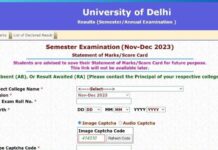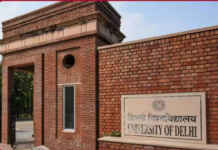Everyone has a happy place, one where their mind feels at peace. At home. This place may not necessarily be confined to the physical realm. This may be your special place, your happy place. However, if you close your eyes to let your mind wander and imagine vast open lands, lush greenery, pristine beaches, and endless deserts, your happy place might very well be Australia.
The sun-kissed continent is home to sprawling outback and rainforests. There is something for everyone here. The country’s proud culture, rich history, and inspiring stories set it apart from other places.

PERMANENT RESIDENCY VISA
In addition to being a destination of wonders, Australia also offers opportunities for permanent residency to skilled professionals. A permanent residency visa is an immigration visa that allows an individual to reside in Australia permanently. It grants access to all the rights and privileges of being a permanent resident of the country, including the right to work and live in Australia indefinitely. Unlike other temporary visas, PR does not have a fixed expiry date and can be renewed indefinitely. It is therefore a more stable and long-term option for those who intend to settle down and build their life in Australia.
The country currently has a highly competitive and points-based system for skilled migration, which requires prospective migrants to meet certain criteria to be granted a permanent resident visa. The criteria for this visa type generally include a high level of education, professional qualifications and work experience, and language ability. Those who qualify can gain access to the country’s robust economy, diverse culture, and unique natural landscapes.
This is a hands-on guide to getting a permanent residency visa in Australia for Indian students. It spells out the entire process, beginning with pre-planning and goal-setting to submitting the final application and documents, clearly and cohesively. The piece also provides a thorough explanation of the key factors required, offering valuable advice and tips to help increase the chance of success. Overall, this article acts as a roadmap that Indian students can readily use to navigate the PR application process more efficiently and successfully.
AUSTRALIA PERMANENT RESIDENCY VISA ELIGIBILITY
- Skills Assessment: Obtain a positive skills assessment from the relevant authority. Each occupation has its own assessing authority, and they evaluate your qualifications, work experience, and skills to ensure they meet Australian standards.
- Age: The skilled visa age limit is usually 45.
- English Language Proficiency: English proficiency test scores such as IELTS, TOEFL, and PTE Academic required for migration.
- Points Test: Points determine eligibility for skilled migration visas.
- Expression of Interest (EOI): Submit an Expression of Interest through the online SkillSelect system.
- Invitation to Apply: Eligible applicants receive periodic visa invitations based on the points score and occupation demand.
- Health and Character Requirements: You will need to undergo medical examinations to prove that you are in good health and provide police clearance certificates from all countries where you have lived for more than 12 months in the past 10 years.
- Nomination: If applying for a state-sponsored visa (subclass 190) or a regional visa (subclass 491), you must be nominated by a state or territory government agency or be sponsored by an eligible relative residing in a designated regional area.
TYPES OF PERMANENT RESIDENCY VISAS
-
Skilled Independent visa (subclass 189):
-
Skilled Nominated visa (subclass 190)
-
Skilled Work Regional (Provisional) visa (subclass 491):
-
Temporary Graduate visa (subclass 485):
This visa allows recent graduates from Australian institutions to live, study, and work in Australia temporarily. Depending on the stream (Graduate Work or Post-Study Work), Indian students may be eligible for a visa valid for up to 18 months or four years respectively. While this visa is not a direct pathway to PR, it provides an opportunity to gain valuable work experience in Australia, which can enhance eligibility for other PR visas.
-
Employer Nomination Scheme (subclass 186):
This visa is for skilled workers nominated by an approved Australian employer for a permanent position. Indian students who secure a job offer from an Australian employer may be eligible to apply for this visa, provided they meet the eligibility criteria for one of the streams under this visa subclass.
APPLICATION PROCESS
-
Study in Australia: Indian students first need to study in Australia by obtaining a student visa (subclass 500). Choose a course that aligns with your career goals and has good prospects for obtaining PR.
-
Gain Work Experience: Utilize opportunities such as internships, part-time jobs, or the Temporary Graduate visa (subclass 485) after completing your studies to gain relevant work experience in Australia. Work experience is often a crucial factor in the PR application process.
- Assess Eligibility: Assess your eligibility for PR based on the specific requirements of your chosen pathway. Factors such as age, English language proficiency, qualifications, work experience, and occupation in demand will influence your eligibility.
- Prepare Supporting Documents: Collect required PR application documents: academic transcripts, English test results, skills assessment (if needed), employment references, and relevant papers
- Submit Expression of Interest (EOI): If applying for a skilled migration visa (e.g., subclass 189, 190, 491), submit an Expression of Interest through the online SkillSelect system. Provide details about your skills, qualifications, work experience, and other relevant information.
- Receive Invitation to Apply:
- Submit PR Application: Prepare and submit your PR application to the Department of Home Affairs. Include all required documentation, pay the relevant application fees, and ensure that your application is complete and accurate.
- Wait for a Decision: After submitting your PR application, wait for the Department of Home Affairs to process your application and make a decision. This process may take several months, so be patient and monitor the progress of your application online.
WHAT ARE THE PATHWAYS OTHER THAN SKILLED MIGRATION?
-
Family-Sponsored Pathway:
- Partner visa (subclass 820/801): This visa allows the partner or spouse of an Australian citizen, permanent resident, or eligible New Zealand citizen to live and work in Australia permanently.
- Parent visa (subclass 103): This visa lets parents of Australians, PRs, or eligible New Zealand citizens live in Australia permanently, with contributory options.
-
Business and Investor Pathway:
Business Innovation and Investment (Permanent) visa (subclass 888):
-
Temporary Graduate Visa (subclass 485):
-
Humanitarian and Protection Visa Pathway:
Protection visa (subclass 866):
DOCUMENTS REQUIRED
-
- Passport
- Birth Certificate
- Academic Transcripts:
- Qualification Certificates
- English Language Test Results
- Skills Assessment
- Employment References
- Payslips
- Expression of Interest (EOI)
- Health and Character Documents:
- Medical Examination
- Police Clearance Certificates
- Nomination or Sponsorship Documents
OTHER SUPPORTING DOCUMENTS:
- Marriage Certificate: If applicable, provide a certified copy of your marriage certificate.
- Relationship Evidence: Provide evidence of your relationship for partner visas, such as joint bank accounts, shared bills, or photographs together.
- Dependent Documents: If including dependents in your application, provide their identity documents, birth certificates, and other relevant documents.
While the process may seem intimidating and daunting, with determination and diligence, it is certainly achievable. By following these steps, Indian students can progress towards permanent residency in Australia. Their new happy place.
























